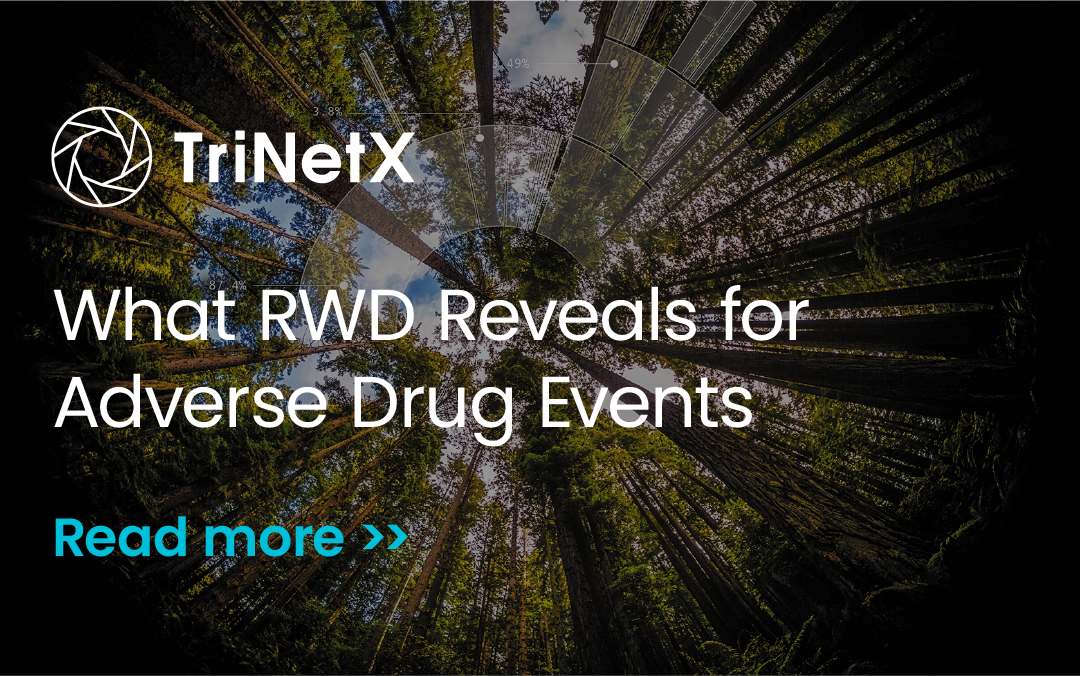Adverse Drug Events (ADEs) or Adverse Drug Reactions (ADRs) continue to be a concern both in new and existing medicines. According to Medication Safety Data published by the U.S. Centers for Disease Control and Prevention (CDC), ADEs cause more than 1.5 million emergency department (ED) visits each year and nearly 500,000 patients are hospitalized after these ED visits. The risk of an ADE increases as we age with more than 600,000 individuals over 65 visiting the ED, more than twice the amount of younger people.
Safety is a key element the U.S. Food and Drug Administration (FDA) focuses on when considering applications for drug approvals. To gain marketing approval, sponsors must establish a positive risk-benefit ratio that shows that the medical product is both safe and effective for the intended use. However, many clinical trials include a limited number of select patients, and many ADEs are not seen until the medication is used widely by more diverse patient populations. The challenge for sponsors and regulators is to determine if reported ADEs are within an expected range or represent a previously unknown ADE.
The Ozempic Experience: Key Insights Derived from TriNetX Data
Take the example of the drug Ozempic, being used to treat type 2 diabetes and also being used for weight loss.
- The FDA’s Adverse Event Reporting System (FAERS) recently highlighted concerning reports related to Ozempic and similar drugs. Specifically, FAERS has logged 59 reports of suicidal ideation, six suicide attempts, and four suicides among users of these medications.
- At the same time, the European Medicines Agency (EMA) was investigating 150 reports of self-injury and suicidal thoughts from people who had taken GLP-1 receptor agonists, the drug class that includes Ozempic.
- Families involved called for the FDA to include warnings about self-injury or suicidal thoughts as potential risks of taking the drug.
As concerns grew, researchers conducted a wide-ranging retrospective study to determine if the reported risks were, in fact, widespread. The study involved electronic health records (EHRs) from more than 240,000 people with obesity and 1.5 million patients with type 2 diabetes accessed from the TriNetX Analytics Network. Researchers looked to assess the risk of suicidal ideation among individuals using Ozempic (a glucagon-like peptide 1 receptor (GLP1R) agonist) as compared to those using non-GLP1R agonists.
The results showed that Ozempic wasn’t associated with a higher risk of suicidal ideation than non-GLP1R agonists used to treat obesity or type 2 diabetes. The findings were consistent across subgroups and those with and without a prior occurrence of suicidal ideation.
The Ozempic story illustrates the importance of determining the actual risk of drugs through empirical real-world evidence (RWE) as opposed to a series of anecdotal examples. While incidents of ADEs must be of concern for regulators, it is more important to determine the actual risk to all users of the drug.
The Power of Real-World Data
The best way to help researchers see trends and monitor, refine, and contextualize potential risks and ADEs in the post-approval period is to perform active safety surveillance monitoring using real-world data (RWD) from large patient populations. Using RWD to actively monitor medical product use and refine safety signals is a critical component to having a robust and responsive medical product safety surveillance infrastructure for both regulatory authorities and product sponsors.
ADEs often arise from drug-drug interactions (DDIs), where one medication affects the metabolism, efficacy, or safety of another. This is especially common in patients taking multiple drugs, as their combined effects can lead to unexpected toxicity or diminished therapeutic benefits. Leveraging RWD allows healthcare providers to better understand these interactions by identifying patterns in patient populations, ultimately helping to mitigate the root cause of ADEs through more informed prescribing and monitoring.
TriNetX is at the forefront of the move toward the robust use of RWD to monitor and contextualize safety issues and refine safety signals. Its deidentified RWD database has been used in multiple studies by academic research, medical product sponsors, and regulatory agencies to assess risks of medical products across the continuum of therapeutic areas.
The TriNetX Impact
TriNetX helps researchers explore RWD in their own research environment, enabling them to go beyond cohort counts with fine-grained, date-stamped observations on large patient cohorts around the world. The TriNetX EVIDEX® platform generates fully integrated, comprehensive, global RWD and evidence that empowers users to detect, analyze, and manage signals in a thorough, transparent, and compliant manner.
Discover how TriNetX can help your organization ensure the success of drug safety research projects.
About Jeffrey Brown, PhD
With more than 25 years of experience in research and consulting, Jeff is an internationally recognized expert in the use of real-world data (RWD) to support the evidentiary needs of regulatory agencies and medical product sponsors and an expert in the assessment of data quality of RWD resources.

